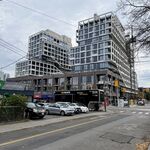Las Vegas: Building Is Booming in a City of Empty Houses
I found this article to be a rather depressing statement on how much many people love sprawl, at all costs. This all sounds like a disaster in the making.
Building Is Booming in a City of Empty Houses
http://www.nytimes.com/2010/05/16/business/16builder.html?ref=general&src=me&pagewanted=all
May 15, 2010 By DAVID STREITFELD
LAS VEGAS — In a plastic tent under a glorious desert sky, Richard Lee preached the gospel of the second chance.
The chance to make money on the next housing boom “is like it’s never been,†Mr. Lee, a real estate promoter, assured a crowd of agents, investors and bankers. “We’re going to come back like you’ve never seen us before.â€
Home prices in Las Vegas are down by 60 percent from 2006 in one of the steepest descents in modern times. There are 9,517 spanking new houses sitting empty. An additional 5,600 homes were repossessed by lenders in the first three months of this year and could soon be for sale.
Yet builders here are putting up 1,100 homes, and they are frantically buying lots for even more.
Las Vegas is trying to recover by building what it does not need. It is an unlikely pattern being repeated in many of the areas where the housing crash was most severe.
“There’s a surprising rebound in the hardest-hit markets,†said Brad Hunter, chief economist with the consultant Metrostudy. “People are buying again.†From the recession’s lows, construction has nearly doubled in Las Vegas, Phoenix and Tucson. It is up 74 percent in inland Southern California and soaring in Florida.
Some of the demand is coming from families that are getting shut out of the bidding for foreclosures by syndicates that pay in cash, and some is from investors who are back on the prowl.
Land and labor costs have fallen significantly, so the newest homes are competitively priced. Some of the boom-era homes, meanwhile, are in developments that feel like ghost towns.
And many Americans will always believe the latest model of something is their only option, an attitude builders are doing their utmost to reinforce.
In Phoenix, a billboard for Fulton Homes summed up the builders’ marketing approach. “Does your foreclosure have tenants?†it asks, next to a picture of a mammoth cockroach.
Brent Anderson, a marketing executive with another Southwest builder, Meritage Homes, said it bought 713 lots in stricken Arizona last year, and was on the verge of starting construction in a new Phoenix community called Lyon’s Gate.
“We’re building them because we’re selling them,†Mr. Anderson said.
“Our customers wouldn’t care if there were 50 homes in an established neighborhood of 1980 or 1990 vintage, all foreclosed, empty and for sale at $10,000 less. They want new. And what are we going to do, let someone else build it?â€
All of this goes contrary to the conventional wisdom, which suggests an improved market for builders is years away. Nationwide, new home sales at the beginning of this year plunged to a level below any recorded since 1963, when the figures were first officially tabulated.
Simply put, the country already has too many houses, the legacy of wide-scale overbuilding during the boom. The Census Bureau says there are two million vacant homes for sale, about double the historical level. Fewer new households, moreover, are being formed as families double up for economic reasons, putting a further brake on demand.
Even some builders agree with the pessimists when it comes to Las Vegas. Meritage Homes, for example, has largely withdrawn from the city. “We don’t think it will come back for a long time,†Mr. Anderson said.
American West is betting the opposite is true. The developer, which is privately held and is based here, builds nowhere else.
The evening under the tent with Mr. Lee was the official start of American West’s new community, called Reserve at Coronado Ranch. Before it opened, buyers began putting down money for the houses, which sell for under $300,000. “For the first time in three or four years, we have pent-up demand,†said American West’s vice president for sales, Jeff Canarelli.
Disregard what you may have heard about how hard times may usher in an era of restraint. “With our buyers, they always want bigger,†Mr. Canarelli said. An American West home introduced during the recession comes equipped with an elevator.
One of the initial buyers at Reserve is Josh Snider, a surgical technologist who decided a year ago he wanted to buy his first home. He sought out a foreclosure, deals that were supposedly plentiful and cheap. “What a nightmare that was,†recalled Mr. Snider, 38. “I put in five or six offers and was always outbid.â€
He didn’t see any homes that were being sold by buyers in the traditional way. The price declines in Las Vegas have been so brutal that most homeowners with a mortgage owe more than their home is worth. If they must sell, their only option is a so-called short sale done with the approval of the lender, which can be a lengthy and frustrating process for all concerned.
Worried the market was going to turn around before he bought, Mr. Snider started checking out the new developments. He liked the floor plan, size and price of Reserve, which ultimately will have 310 houses.
A final incentive sealed the deal, this one courtesy of the United States government: he got a loan insured by the Federal Housing Administration, which meant his down payment was much smaller than a private lender would require.
The house, to be done in September, cost $273,500. “It’s not a bargain for everyone,†Mr. Snider said, “but it’s a bargain for me.â€
He plans to live in the house with his girlfriend, Cindy Rojas, and his 12-year-old daughter.
Another early buyer is Irving Hallman, an investor from Hawaii. “I understand Vegas has its ups and downs, but we did the numbers and this house will hold its value,†Mr. Hallman said.
There is a benefit to the seeming madness in places like Las Vegas. Building homes is the traditional fuel of a recovery.
“Housing is construction. It’s tables. It’s paint. It’s couches. It’s toilets,†said Sally Taylor, a specialist in liquor and gambling establishments who attended the American West festivities. “If we build more houses, we’re creating more jobs.â€
Across the street from Reserve’s three model homes is a new strip mall. Only one building is occupied, a gambling parlor. Others will start to be filled when more buyers join Mr. Snider and Mr. Hallman finds a renter.
Analysts have calculated that it could take as long as a decade for inventories to return to their precrash levels and for demand to once again exceed supply. That is a grim prospect for any owner who hopes to accrue equity through rising prices.
A few experts, however, are starting to think the path to a better market will be much shorter. Stephen F. Auth, chief investment officer at the financial services company Federated Investors, is a housing bull. He says he does not believe that many extended families will end up all living in one place, like the Waltons in the 1930s.
“That’s an unsustainable environment — Grandma coming home, Johnny moving back in with his new wife,†Mr. Auth said. “They’re going to move back out. The great housing depression is nearly over.â€
New-home sales in March rose 27 percent. But most analysts attributed the jump to the pending expiration of yet another government incentive, a tax credit for buyers, and said sales would quickly slump again.
Even in Las Vegas, a community built on the willingness to be lucky, belief in a housing turnaround — and Mr. Lee’s portrait of a resilient city on its way to being a global “meetspace†— is provisional. Agents at the party said they had their hopes but were chastened by the horrors of the last three years.
Afterward, packing up his video equipment, Mr. Lee said the party itself heralded a recovery. “We used to do this every two weeks, starting in the 1990s,†he said. “But this is the first time in 18 months. Believe me, it’s been famine around here.â€







